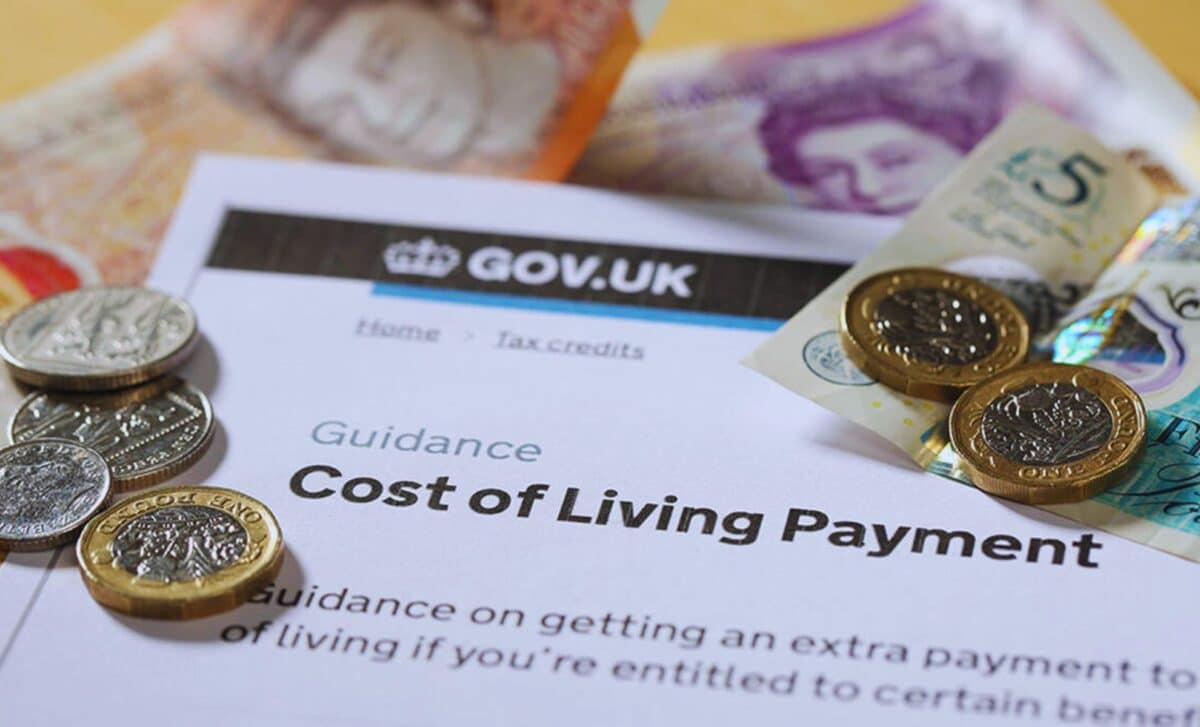As households across the UK continue to grapple with rising living costs, the government has reintroduced Cost of Living payments worth up to £300 to provide much-needed financial relief. Distributed through the Household Support Fund, these payments are designed to assist vulnerable households struggling with soaring energy bills, water costs, and other essential expenses.
This scheme, funded by the Department for Work and Pensions (DWP), offers targeted support to those in the greatest need. With the latest round of funding extending until March 2025, many households can now apply for this vital assistance. Below, we break down the details of the payments, eligibility criteria, and the application process to ensure that eligible residents don’t miss out.
Understanding the Cost of Living Payments
The Household Support Fund was first introduced in response to the growing financial pressures faced by low-income families, pensioners, and individuals across the UK. This initiative provides direct financial assistance to help cover essential costs, such as energy and water bills, during periods of economic hardship.
The latest funding, announced for 2024–2025, ensures that qualifying households can receive up to £300. This amount is determined based on household size and composition, with payments typically allocated as follows:
- Households of one or two members (including children) may receive £200.
- Households with three or more members are eligible for up to £300.
Unlike previous schemes, these payments are not limited to recipients of Universal Credit or other DWP benefits. Instead, eligibility is based on financial need, making the fund accessible to a wider range of households.
The funds are distributed by local councils, who tailor the criteria and application processes to the needs of their residents. This decentralised approach allows the scheme to be more responsive to the specific challenges faced by communities across the UK.
How the Household Support Fund Helps
The Household Support Fund addresses a range of immediate needs, particularly for those struggling to meet rising energy and utility costs. Payments from the fund are issued directly to energy suppliers, appearing as credits on recipients’ electricity or gas accounts or prepayment meters. This ensures that the money is used specifically to offset essential bills.
In areas like Blackpool, the fund has been instrumental in supporting residents through difficult winters. Local authorities report that the scheme is particularly valuable for families with young children, older residents, and individuals with disabilities, who are disproportionately affected by energy price increases.
In addition to direct financial relief, the fund also serves as a safety net for those experiencing sudden financial crises, such as job loss or unexpected medical expenses. By providing timely assistance, it helps prevent vulnerable households from falling into deeper hardship.
Who Is Eligible for Cost of Living Payments?
Eligibility for the Cost of Living payments is based on several factors, with the overarching requirement being financial hardship. Households must demonstrate that they lack sufficient resources to meet immediate needs, particularly in relation to energy and water costs. Below are the key eligibility criteria:
- Permanent Residency: Applicants must reside at the address associated with the utility accounts. For families, children must also be permanent residents of the property.
- Responsible for Utility Bills: The individual applying must be responsible for paying the household’s electricity or gas bills.
- Proof of Financial Need: Applicants must demonstrate financial hardship and provide supporting documents, such as recent utility bills, proof of income, or evidence of arrears.
- No Recent Household Support Fund Payments: Households that have already received payments from the Household Support Fund in the last 12 months may not be eligible for additional support.
Local councils manage the application process and may impose additional requirements based on regional needs. Residents are encouraged to contact their local authority for specific details.
How to Apply for the Household Support Fund
Applying for the Household Support Fund requires applicants to follow guidelines set by their local council. While most applications can be submitted online, some councils also accept paper applications or provide assistance over the phone. Here’s a step-by-step guide to the general process:
- Check Eligibility Criteria: Visit your local council’s website to review the specific requirements for your area.
- Gather Necessary Documents: Prepare proof of residency, financial hardship, and responsibility for utility bills. This may include tenancy agreements, recent bank statements, or energy account details.
- Submit an Application: Complete the online form or contact your council to request an alternative method.
- Await a Decision: Once your application is submitted, your council will assess your eligibility. Successful applicants will receive notification, and funds will be credited directly to their utility accounts.
It is essential to apply promptly, as funding is limited and allocated on a first-come, first-served basis. Councils may close applications early if demand exceeds available resources.










How does the government think that £368 is a suitable amount to survive on for a month, it’s ridiculous I can’t find work, as the job system has dried up in Blackpool, I have 75 pence left until I get paid by UC in January, I can’t find any one to help me as I need some money for for food, and bills. Would you be able make £368 last a month? NO YOU WOULDN’T, your a bunch of idiots and you haven’t got a clue, what idiot thought the universal credit is a good system? Why should I or anyone have to suffer going to a food bank over Christmas, when people like you will be pigging out on Christmas dinner, this country is a disgrace.
It’s disgusting on how you expect us to live on 320 pounds a month got hardly any food in no presents for kids and grandkids so christmas is banned
Everything is wrong Everything is going up!This government has left this country in poverty with most ppl struggling to make ends meet!Its crazy how they have put ppl in hotels being feed and a roof over there heads!And no help for British ppl
While i dont begrudge £50million to help the people of Syria make abetter life for the future Surely our own people ans pensioners and working parents struggling to feed their kids and pay bills deserve help Im disgusted with this government and will never vote for them Also i hope they enjoy their 5 yr tenure because they wont get in again they have done everythin wrong from the start